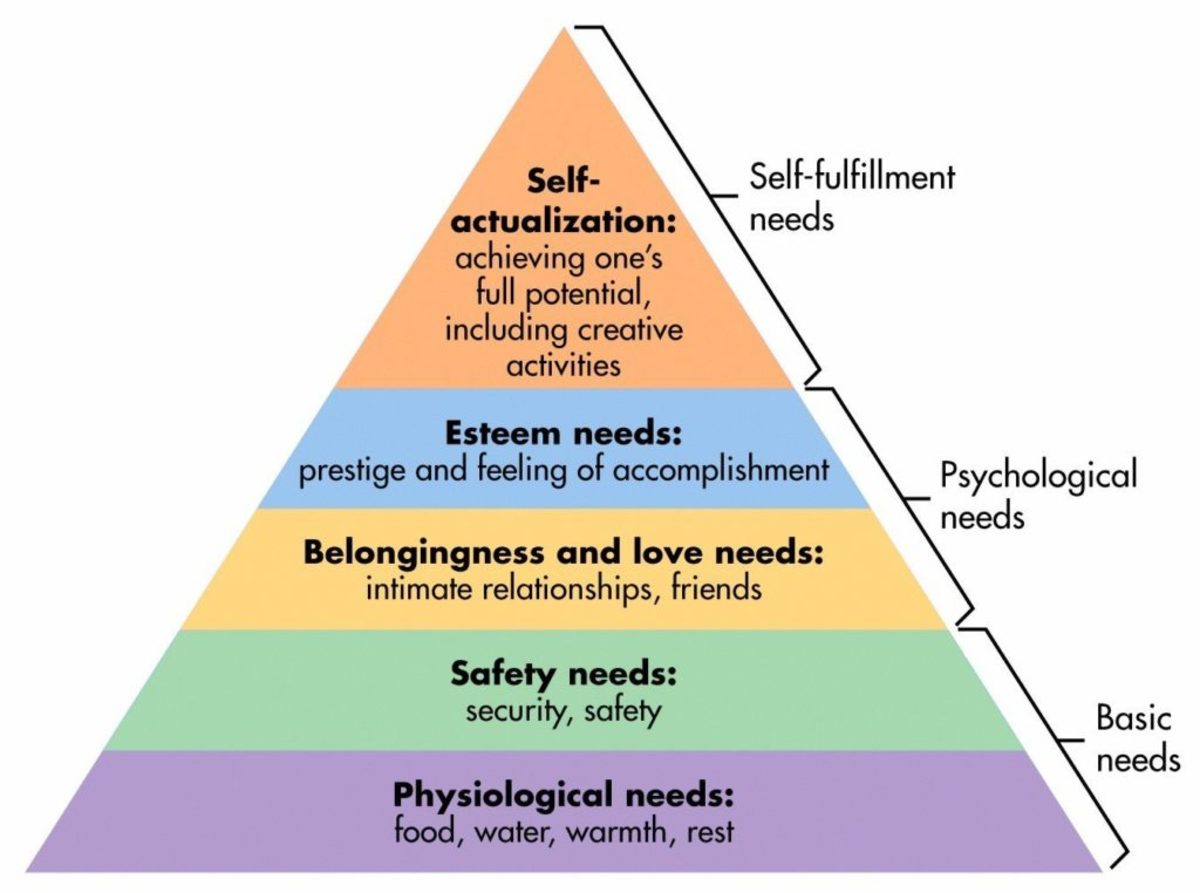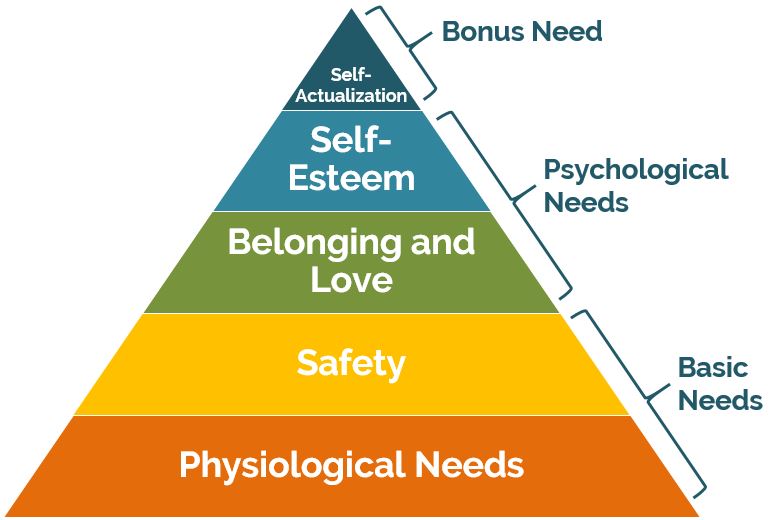Abraham Maslow Theory of Human Motivation
How a manager’s duties are undertaken can significantly influence the satisfaction that employees derive from their work. In addition to technical skills, an understanding of human relations skills is required in motivating people.
Content Theories of Motivation
Content theories of motivation ask the question; What are the things that motivate people? ‘They are sometimes called need theories and assume that human beings have a set of needs or desired outcomes that can be satisfied through work. The theory focuses on what arouses, sustains, and regulates good, directed behavior. Content theories assume that everyone responds to motivating factors in the same way and that there is one best way to motivate everybody.
Abraham Maslow Hierarchy of Human Needs
Abraham Maslow’s theory suggested that individuals have a hierarchy of personal needs that are identifiable, universally applicable, and which can be satisfied in the workplace.
Understanding this idea provides guidance to management as to the appropriateness of motivational techniques.
Abraham Maslow Hierarchy of Need
Maslow suggested that individuals have five needs, which are arranged in the hierarchical form:
- Self – actualization
- Esteem needs
- Social needs
- Safety needs
- Physiological needs
These needs are arranged in a hierarchy of importance, and movement is upwards, from physiological needs to self-actualization. Any individual will always want more; therefore, each need must be satisfied before the next is sought. However, so far as motivation in the workplace is concerned, a satisfied need is no longer a motivator.
Maslows Hierarchy of Needs Explained
The theory is presented in the shape of a triangle, with physiological needs at its base and self-actualization at its apex. The triangle shape has a clear significance. As an individual moves up towards the apex, the needs thin out, illustrating that physiological needs are far greater than self-actualization needs. Thus, the shape recognizes that reaching social needs is often the highest need to be satisfied for many individuals.

More modern texts present the theory as a staircase, again, with self-actualization at the top. This second diagrammatic form reflects the theory’s application to more modern situations, where it can reasonably be assumed that those within the organization have already achieved physiological and safety needs. For such individuals, social and esteem needs may well be greater.
Maslow’s Hierarchy of Needs Examples
💥🎁 New Year & Easter Deals On Amazon !
Don't miss out on the best discounts and top-rated products available right now!
🛒 Shop Now and Save Big Today!*As an Amazon Associate, I earn from qualifying purchases.
Physiological needs are the basic survival needs ñ food and shelter, warmth, clothing Safety needs are the desire for security, order, certainty, and predictability in life and freedom from threat.
These two so-called lower order needs” dominate until satisfied.
Social needs are the gregarious needs of mankind, the need for friendship, relationships, affection.
Esteem needs are the desire for recognition and respect, often associated with status, especially in the modern world.
Self-actualization is the ultimate goal, the feeling that full potential has been achieved. Once this state is reached, the individual has fulfilled full personal potential.
Later work by Maslow has suggested that there are two additional needs; freedom of inquiry (free speech, justice) and knowledge (the need to explore and learn). These additional needs are a further development of social needs and recognize the changing nature of modern life.
The theory is based on the idea that the individual and the organization’s goals can be integrated and that personal satisfaction can be achieved through the workplace. It also assumes that individuals will achieve self-actualization through their role in assisting the organization in achieving its objectives. Therefore, work is the principal source of satisfaction.
Abraham Maslow Theory of Human Motivation /Limitations of Motivation Theories
Although this theory has an intuitive obviousness in how it describes human needs, it has many limitations.
- Individuals have different needs and not necessarily in the same order
- It is simplistic in its approach; more modern theories of motivation recognize that the need for personal self-fulfillment is exceptionally complex.
- Many individuals may seek to satisfy several needs at the same time
- The same need can cause different reactions in different people
- Not all these needs are or can be, satisfied through work and this is significant criticism of the idea
- Individuals are unlikely to seek or to reach the ultimate; many settle for less
- Taken literally, they can mislead management in its desire to motivate staff
- Job satisfaction does not equal improved work performance
- What an individual seeks depends upon what he or she already has
- Ignores the dynamics of working with others in the workplace and therefore the modern concepts of teams
The theory does not recognize the demands of the organizational situation. As a consequence of their product, service, culture, structure, technology, or environment, many organizations do not necessarily provide a suitable environment for self-actualization.
